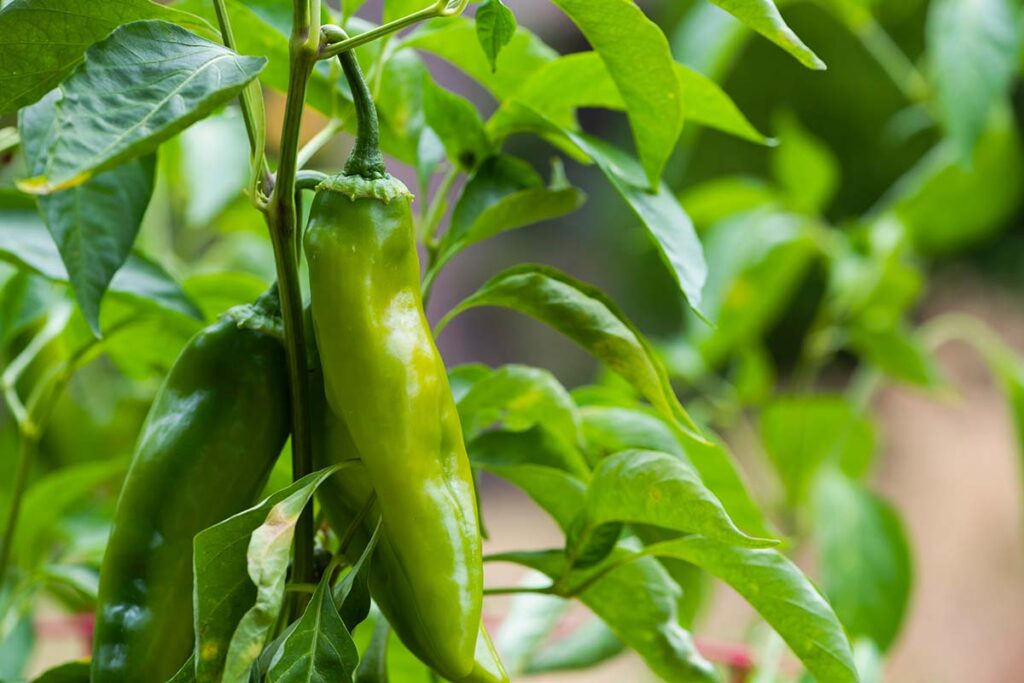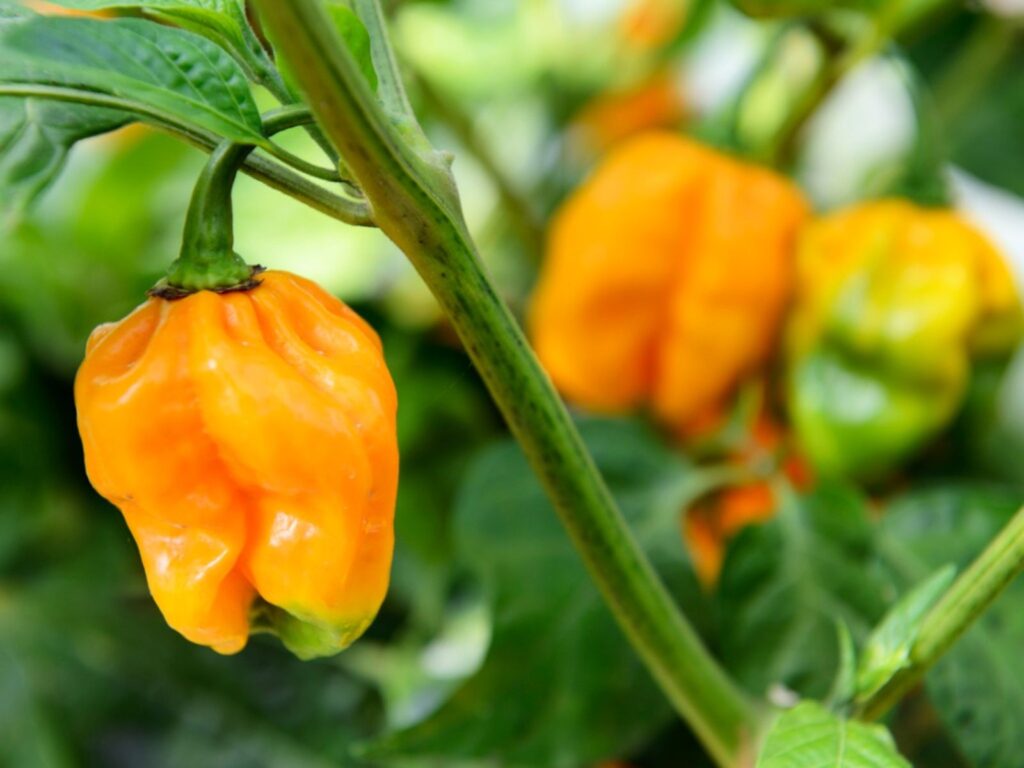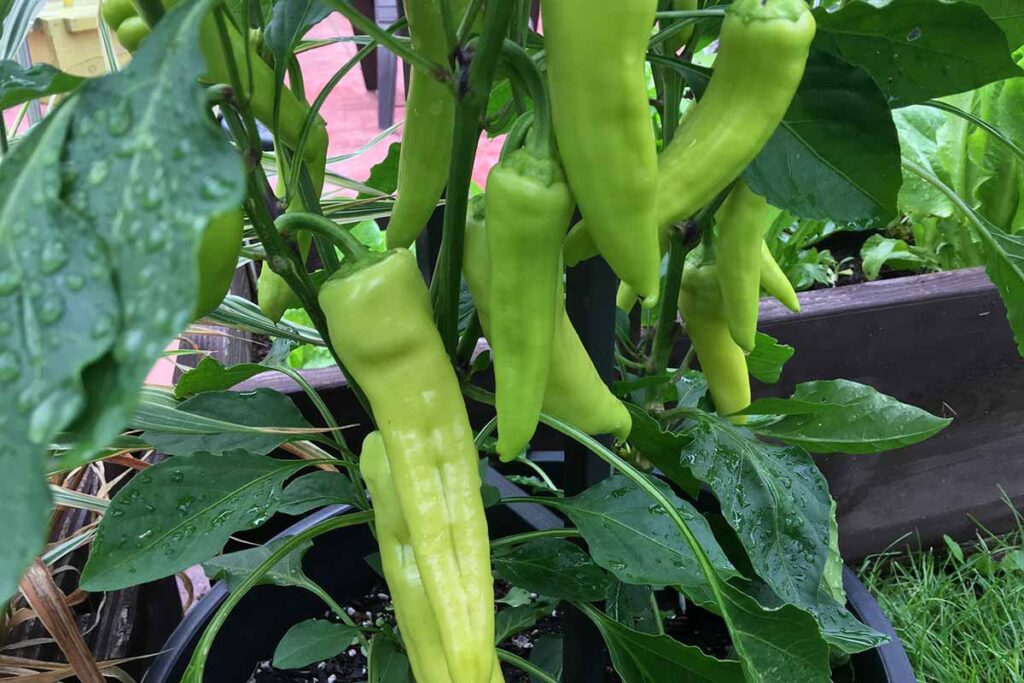Some Like it Hot
- 2024-05-02
- By mkirk
- Posted in Horticulture, The Garden Buzz
By Jessie Asimus, Colorado Master Gardener

Green chili is a bit of a staple here in Colorado. Thanks to its notoriety, the first pepper many locals think of is the Anaheim green pepper. While this variety makes a flavorful roasted sauce or stew, there are many varieties we can choose to grow in our Front Range vegetable gardens. CSU Extension Fact Sheet 7.616 has a limited list of varieties that grow well here, but with well-draining soil, and enough sun and water, you can grow almost any variety here. You’ll just want to remember that our growing season is short, so if you have not started seeds, you will want to buy plants from a local nursery, so you have a good harvest by the end of the growing season.
The first step in choosing what varieties to grow is understanding Scoville Heat Units (SHU). This scale is used to rate the hotness of the pepper variety. If you prefer a mild pepper, bell peppers rank at 0 SHU. If you like spice, habanero peppers rank at 100,000 to 350,000 SHU. Anaheim peppers, used in the popular green chili, rank at 1,000 to 5,000 SHU.
Bell peppers are one of the most common peppers found in grocery stores. By growing your own, you can use them in home cooked meals all summer. They also freeze well! We like to cut them into strips for future fajitas and freeze them. There are many types of bell peppers, allowing you to grow green, red, yellow, orange, or even purple bell peppers to bring color to your vegetable patch.
Anaheim peppers have more heat than bell peppers and have less flavor. Roasting them, as is done for green chili, gives more flavor. If they ripen to red, the peppers can be dried for later use.

Habanero peppers are not only fun to use in the kitchen, but their orange lantern-shaped fruits add color to your vegetable garden. This variety may fruit more sparingly in our climate, but because of the heat, you will not need as many peppers to add flavor to your dishes.

Banana peppers are a yellow elongated sweet pepper that will not only add interest to your vegetable garden, but the fruit can be used to make pickled peppers. This pepper is sweeter than other varieties, so it is an excellent choice for gardeners who do not like heat in their food.
Experiment with plants that interest you for cooking. Make sure to read the plant’s needs to allow for a successful growing season and harvest.
For a list of pepper cultivars and descriptions, click here.
Horticulture Resources
- Garden Buzz Archives
- CSU Extension Resources
- Colorado Master Gardener Program
- Foothills to Plains Native Plant Master Program
- Native Bee Watch Community Science Program
- The Co-Hort Blog
- PlantTalk Colorado
- Soil Testing
- Plant Select
- Emerald Ash Borer
- Japanese Beetle
- Colorado State Forest Service
- Ask an Expert


